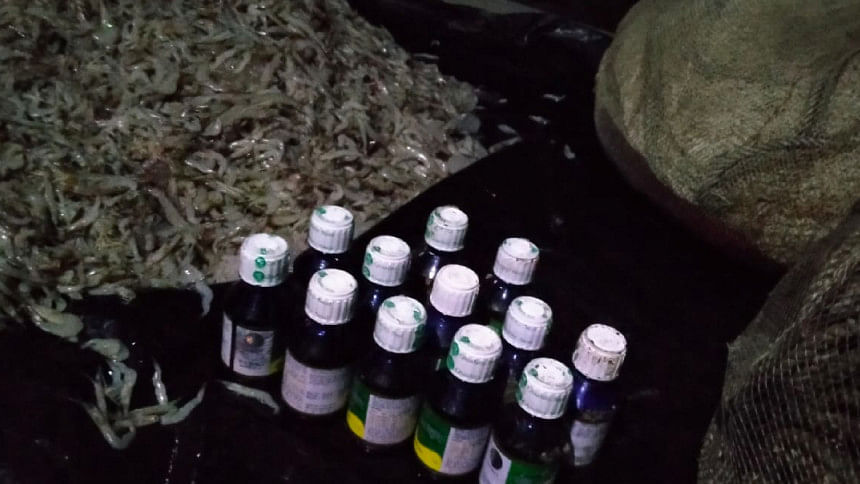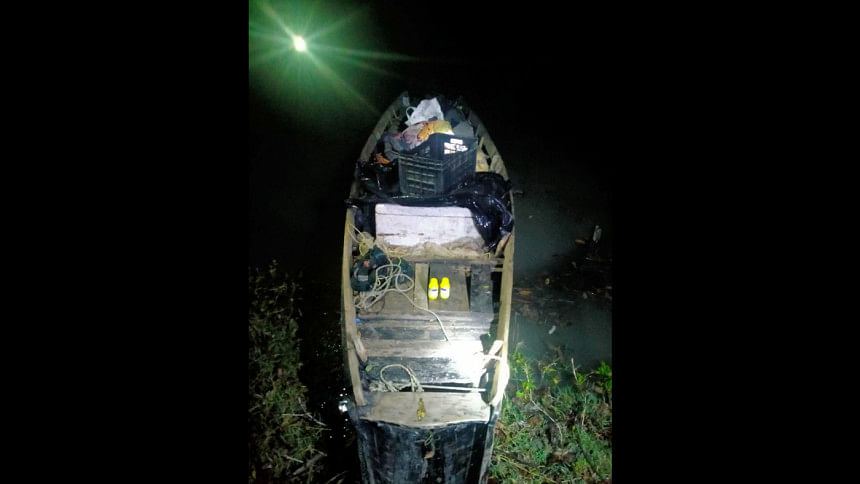Poisonous baits a threat to Sundarbans fish

Sundarbans' marine resources, including fish and crustacean stocks, are depleting due to indiscriminate use of poisonous substances for fish baits, raising concerns among environmentalists.
Spearheaded by local fishermen and syndicates, this practice poses a substantial risk to the region's ecosystem.
Officials and environmentalists are concerned that the continued use of poison in fish extraction may lead to a significant depletion of fish stocks throughout the Sundarbans. Furthermore, the local flora and fauna could also face severe threats.
Joydeb Paul, district fisheries officer of Khulna, said some fishermen mix pesticides with prawns, rice, or other baits and place those in the canals just before the tide.
"Within a few moments, different species of fish in the water die. Then they catch and supply it to various markets," he added.
Notably, this practice also results in the poisoning of other aquatic animals, and the toxins enter river water, endangering the entire mangrove forest ecosystem.

Traditionally, a ban is enforced between June 1 and August 31, preventing access to the Sundarbans, as it coincides with the breeding season for many fish species. However, some fishermen resort to using poisonous baits to capture large quantities of fish during this period, capitalising on the lax monitoring of authorities concerned, said officials.
Joydeb said in recent years this practice has led to the poisoning of fish worth crores of taka, severely hampering fish breeding efforts. The fisheries department is restricted from leading raids in the Sundarbans due to jurisdictional limitations, he added.
Locals alleged that fishermen from adjacent areas of the Sundarbans are primarily involved in this practice.
Afzal Farazi, president of Mongla Bazar Fisheries Association, said some influential individuals reportedly pay significant sums to fishermen to poison the fish in the Sundarbans.
Akkas Ali, a fisherman from Kalabogi village in Dacope, said, "Wherever the poison is being used, we don't find any fish there for a week."
Seeking anonymity, a fisherman who was involved in the fish poisoning racket, said agricultural pesticides such as Ratanon Diamgro, Fighter, Ripcord, and Pesicle are commonly used as baits.
Prof Abdullah Harun Chowdhury of Environmental Science department at Khulna University warned that the poison not only harms all types of fish but also has long-term effects on the surrounding soil.
"Additionally, when the contaminated water flows towards deep sea, it adversely affects aquatic life in the area," said the expert.
Dr Sheikh Baharul Alam, owner of Community Surgical and Trauma Center and president of the Bangladesh Medical Association in Khulna, said consumption of poisoned fish is detrimental to human health, potentially causing severe harm to the stomach, liver, and kidneys.
"It can also lead to cancer and sudden deformities," said the physician.
Efforts to combat this issue include increased patrols and monitoring during the ban period. Fishermen are now required to notify station officers of their fishing locations within the Sundarbans, reducing their ability to employ poison in the canals.
During the June-August period, the forest department arrested 168 individuals for entering the Sundarbans during the ban.

Around 1,072kg of prawns, 1,175kg of crabs, 27kg of deer meat, 750 metres of deer traps, 235 boats, 3 trawlers, and 45 bottles of poison were seized from their possession, said Abu Naser Mohsin Hossain, divisional forest officer of the West Sundarbans.
According to the Forest Department, the Sundarbans watershed, covering 1,874.1 square kilometres within the Bangladesh part of the forest, is considered a fisheries treasure.
It has approximately 450 canals and 13 major rivers and is home to 210 fish species, including bhetki, rupchanda, dhatina, and hilsa, along with 24 species of shrimp and 14 species of crabs.
One-third of the total fish harvested in the southwest region comes from various river channels in the Sundarbans.

 For all latest news, follow The Daily Star's Google News channel.
For all latest news, follow The Daily Star's Google News channel. 



Comments